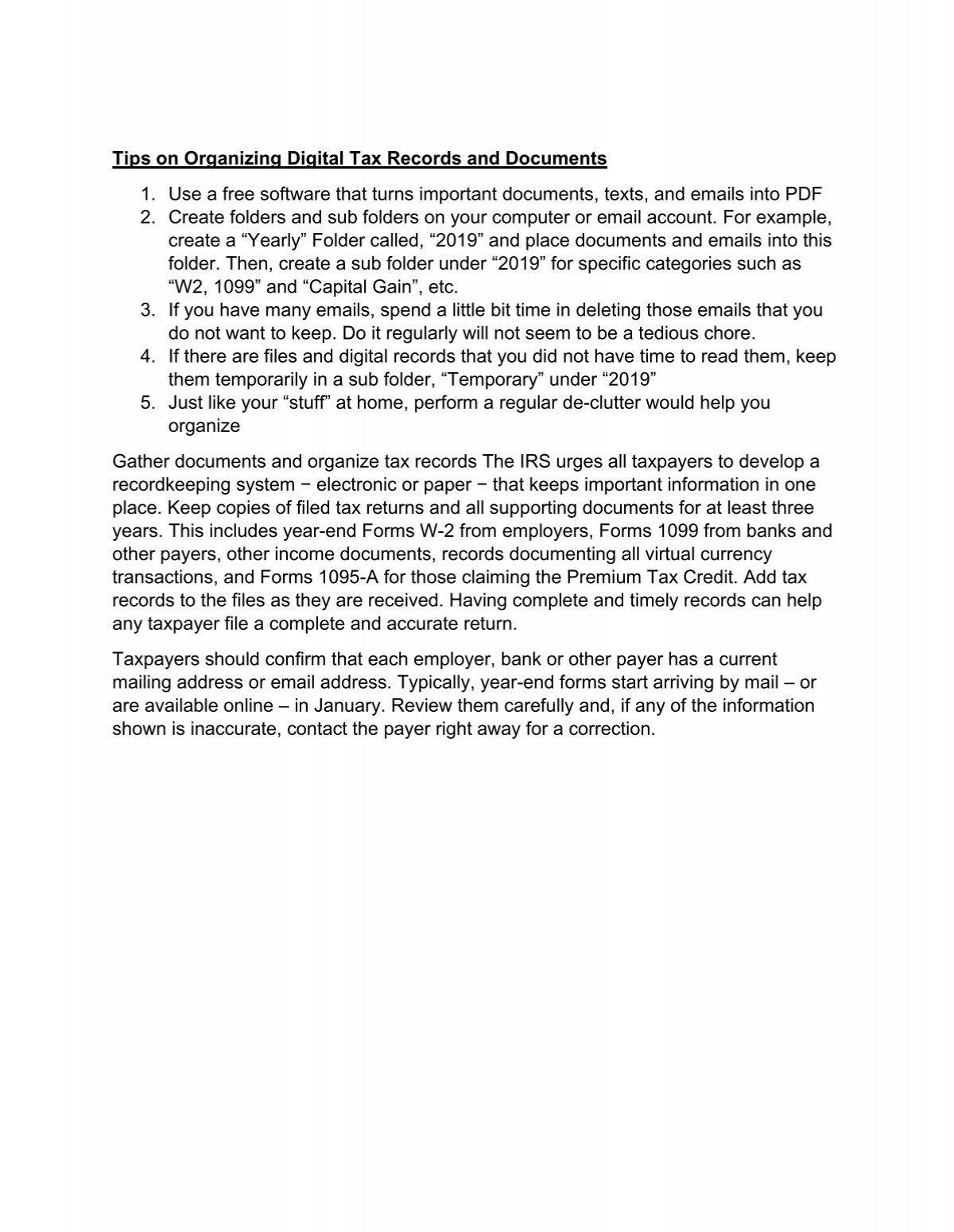7 Tips for Organizing Tax Paperwork Like a Pro

Organizing Your Tax Paperwork: A Key to Stress-Free Tax Season

Handling your tax documents can often seem overwhelming, but with the right approach, you can transform it into a smooth, manageable process. Whether you’re a first-time filer or you’ve been through tax season countless times, having an efficient system for organizing tax paperwork not only reduces stress but also ensures you’re ready when tax time arrives. Here are seven professional tips to help you organize your tax paperwork with ease.
1. Create Designated Folders for Tax Documents

Start your organization process by setting up designated folders for your tax-related documents. Use categories such as:
- Income: W-2s, 1099s, and any other forms of income documentation.
- Expenses: Receipts for charitable donations, medical bills, or business expenses.
- Investments: Records for stocks, bonds, and mutual funds.
- Tax Forms and Guides: IRS forms, instructions, and previous tax returns.
This structured approach helps you locate documents quickly and ensures nothing gets overlooked.
2. Implement a Filing System

An efficient filing system is essential. Here are some steps to set it up:
- Use a drawer or file cabinet dedicated solely to taxes.
- Label each folder clearly to reflect the year or type of documents stored within.
- Consider using color-coded folders or labels for an added layer of organization.

3. Use Digital Tools for Backup

While paper documents are traditional, digital backups offer significant advantages:
- Scan and Store: Scan all paper documents and store them in a secure, encrypted cloud storage solution like Dropbox or Google Drive.
- Software Solutions: Consider tax software that allows direct import of digital documents, reducing the chance of data entry errors.
- E-sign and Send: Utilize e-signature tools for any documents that require your signature, ensuring they can be sent to your accountant or tax preparer digitally.
💡 Note: Ensure your digital storage complies with IRS digital retention policies.
4. Keep Track of Deadlines

Avoid last-minute rushes by tracking key tax deadlines:
- Create a calendar or use a reminder app to mark important dates like the tax filing deadline (usually April 15th), quarterly tax payments for self-employed individuals, and extension deadlines.
- Set alerts a few weeks before each deadline to ensure ample time for document collection and preparation.
5. Organize Throughout the Year

The most effective way to manage tax paperwork is to organize it as you go:
- Monthly or quarterly reviews can prevent year-end surprises.
- After receiving each tax-related document, file it in its corresponding folder immediately.
- Keep a running tally of tax-deductible expenses or income if you’re self-employed or a freelancer.
6. Review Old Tax Returns for Reference

Your past tax returns are a goldmine for understanding your tax situation:
- Compare your current year’s documents against last year’s to ensure consistency or catch new items.
- Look for changes in tax laws or personal life that might affect your tax liabilities or benefits.
7. Secure Storage for Confidential Information

When dealing with tax paperwork, security is paramount:
- Physical Security: Lock your tax folders in a secure cabinet or safe when not in use.
- Digital Security: Use strong passwords, two-factor authentication, and encryption for digital files.
- Shredding: Destroy outdated or unnecessary documents to prevent identity theft.
🚨 Note: Never dispose of tax records without shredding them first to protect your sensitive information.
As you implement these tips, your approach to tax preparation will not only be more organized but will also likely become less time-consuming. By keeping your documents in order throughout the year, you reduce the risk of errors, ensure all potential deductions are accounted for, and foster a sense of calm during what can often be a stressful period. Remember, organizing your tax paperwork isn't just about efficiency; it's about setting yourself up for success by ensuring accuracy and peace of mind when tax season rolls around.
Why should I organize my tax paperwork?

+
Organizing tax paperwork helps streamline the tax filing process, reduces stress, and minimizes the chance of errors or missed deductions, ultimately saving you time and potentially money.
Can I use digital tools instead of physical filing?

+
Absolutely, digital tools offer convenience, secure backups, and ease of sharing. Ensure the digital copies comply with IRS rules regarding electronic document retention.
How long should I keep my tax documents?

+
The IRS recommends keeping tax returns and supporting documents for at least three years from the date you file your return or two years from the date you paid the tax, whichever is later. Some documents should be kept longer.



